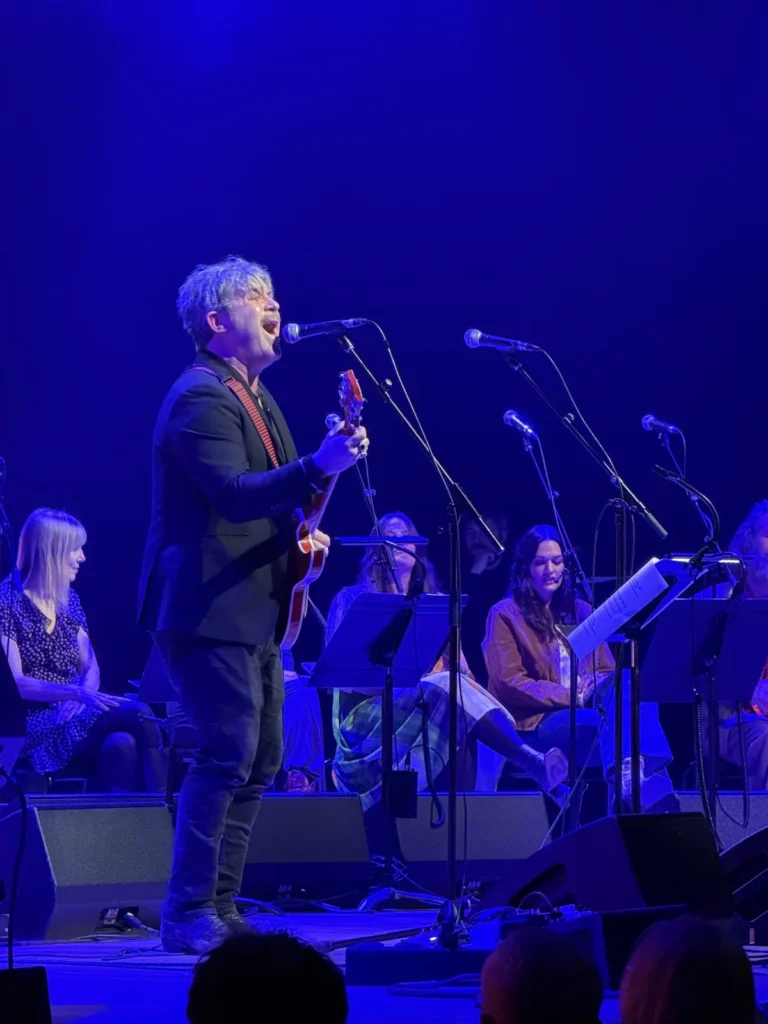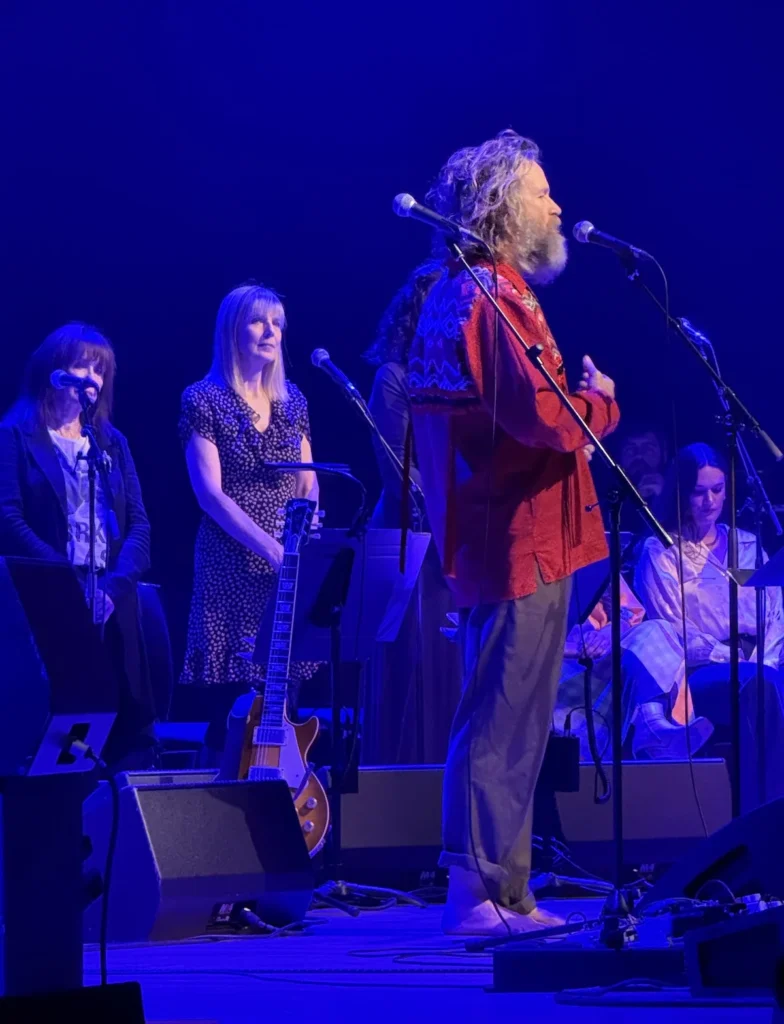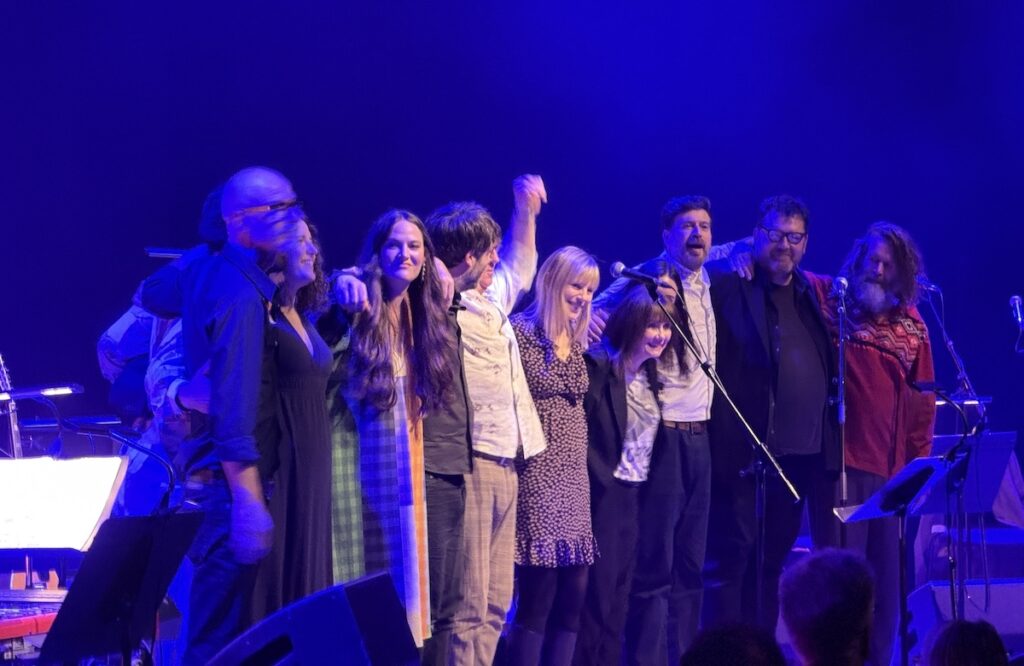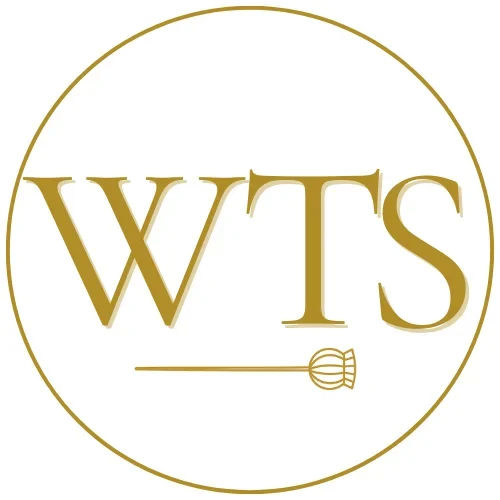If I Could Only Remember My Name – The Music of David Crosby
Barbican, London – 3 February 2025
Table of Contents
An Evening to Remember
I’ve long been fascinated by the West Coast scene and the artists who emerged from Laurel Canyon. The harmonies, the stories, and the collaborations that defined that era have become the soundtrack to my life—CSN, Joni Mitchell, and Neil Young are among my most frequently played artists. David Crosby was at the heart of it all—through The Byrds, his friendships with Mama Cass and Joni Mitchell, and of course, his work with Crosby, Stills, Nash & Young. I never had the chance to see him live, but this concert promised to be an intriguing presentation of his most iconic solo album, If I Could Only Remember My Name.
The Album and Its Place in the Crosby Timeline
By the time If I Could Only Remember My Name was released in 1971, Crosby had already left an indelible mark on music history. He first rose to prominence with The Byrds, co-founding the band in the mid-1960s and shaping their signature folk-rock sound. Songs like Eight Miles High and Everybody’s Been Burned showcased his innovative approach to harmony and songwriting, yet creative tensions led to his departure in 1967.
Soon after, he formed Crosby, Stills & Nash, with Stephen Stills and Graham Nash—later joined by Neil Young. Their self-titled debut album in 1969 was a landmark in folk-rock, featuring timeless tracks like Suite: Judy Blue Eyes and Helplessly Hoping. CSNY’s Déjà Vu followed in 1970, reinforcing their status as one of the defining acts of the era.
In the midst of this, Crosby channelled his creative energy into his first solo project. If I Could Only Remember My Name was a deeply personal album, emerging from a period of immense personal loss and introspection following the death of his partner Christine Hinton. The album’s title was widely understood as a wry nod to Crosby’s well-documented struggles with drugs, particularly in this era. While met with mixed reviews upon release, it has since become a cult classic, admired for its lush, atmospheric production and ethereal harmonies. The record featured an all-star supporting cast—Joni Mitchell, Neil Young, Jerry Garcia, and members of Jefferson Airplane and Santana—creating a rich sonic tapestry that blurred the lines between folk, rock, and psychedelia.
The Barbican – A Civilised Setting
I’d never been to the Barbican before. Its Brutalist design and reputation for hosting highbrow classical performances made me wonder how it would suit a tribute to Crosby’s free-spirited, improvisational style.
I have to say, it was a fantastic location—so close to major transport hubs. It’s surrounded by restaurants (I ate at Cote but liked the look of Jugged Hare across the road if I wasn’t going to a concert).
The Barbican Hall is huge yet warm. It’s underground, but free WiFi kept me connected. The seats were proper ones—no flip-ups—with good legroom and visibility.
I’ll definitely be looking for more events here.
Set 1 – If I Could Only Remember My Name
The celebration was the brainchild of Kate St. John, a talented multi-instrumentalist and founder member of Dream Academy (Life in a Northern Town remains one of the best songs of the eighties). She had loved this album since she first heard it, aged 14. Tonight, she said it felt transcendental to be performing it on stage, surrounded by such a talented group of musicians.
And talented they were—every musician and singer was an immense talent in their own right. Together, they formed the most beautiful tapestry of music and harmony. There was no single lead singer or dominant voice; instead, they took turns breathing life into the songs. The Staves opened with Music Is Love before passing the spotlight on, performing [almost] every track on the album. Unlike many concerts that promise to play an album in full, this band actually did—every song, in order.

Ed Harcourt brought the power with a rocking Cowboy Movie, while Liam Ó Maonlaí of Hothouse Flowers delivered a breathtaking Traction in the Rain. I’d bought the ticket on the strength of his presence, and my introduction to Crosby was through this song (performed live with Graham Nash). That was a wonderful, spine-tingling moment.

A passionate rendition of What Are Their Names showed that Crosby’s songwriting remains as relevant as ever.
There was only one song they didn’t attempt. The stage lights dimmed as the haunting vocals of David Crosby reached out over our heads. I’d swear there was somebody here. So clever, so powerful.
Set 2 – Music Is a Lifting Force
After a brief intermission, the band stretched their legs to cover some of Crosby’s most cherished songs.
We sang Happy Birthday to Margo Buchanan after she delivered a poignant Long Time Gone.
When asked to participate in the concert, Ed Harcourt had one request—he wanted to sing Almost Cut My Hair, and it showed. His performance truly rocked.
Liam Ó Maonlaí returned for a beautiful Guinevere, after which The Staves came forward to sing a song about nuclear holocaust. Now I truly understand what Wooden Ships is about.
It was left to Michelle Willis, an old friend of the late David Crosby and a core member of his touring band for over a decade, to share stories and songs that were new to me.
She introduced Morrison by CPR, a song co-written with Crosby’s son James Raymond, whom he met while recovering in hospital. She also explained that Crosby always used to say that “music was a lifting force” before performing Things We Do for Love.
We began with Music Is Love and ended with Things We Do for Love. There was certainly a lot of love on stage—and in the audience. This was a very special night.
For the Performers, Music Is Love
The singers weren’t the only stars. A stellar group of road-worn musicians brought the music to life. Robbie McIntosh, a revered session guitarist with credits including Paul McCartney and The Pretenders, ensured the intricate guitar work was in safe hands. Ed Harcourt, known for his collaborations with Marianne Faithfull and Patti Smith, added a rich, atmospheric approach.
Ben Nicholls (Seth Lakeman, Kings of The South Seas) anchored the arrangements on bass, and Ernesto Marichales provided the subtle Latin and psychedelic rhythmic textures on percussion.

Final Thoughts
This small, intimate concert is one I will remember for a long time. I didn’t take many pictures (although they said it was cool as long as you didn’t annoy others), but I did disconnect from reality and was transported back to Laurel Canyon for a few hours.
It’s not just David Crosby’s music that lives on—his words do too. In 2025, they are as relevant as they were in 1971:
“I wonder who they are
The men who really run this land
And I wonder why they run it
With such a thoughtless hand
What are their names and on what streets do they live?
I’d like to ride right over this afternoon and give
Them a piece of my mind about peace for mankind
Peace is not an awful lot to ask.”
(What Are Their Names – David Crosby)
